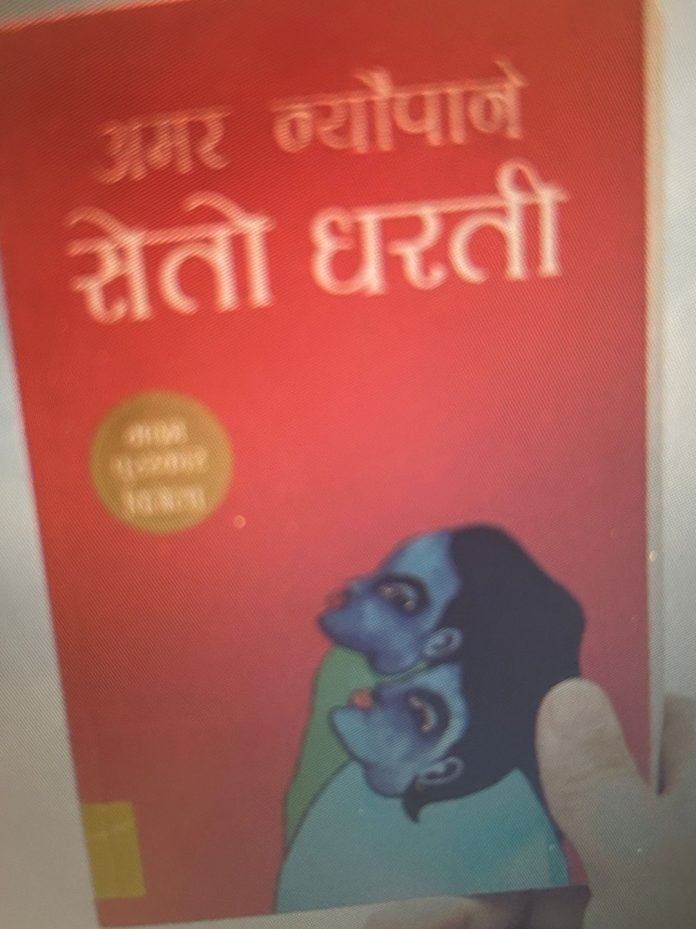Readers will be both devastated and encouraged by this profound examination of love, tragedy, and resiliency, which earned the Madan Puraskar prize in 2012.
By following the life of a child widow named Tara as she negotiates the difficult and strict demands her family and community impose on her, Amar Neupane’s Seto Dharti (White Earth) clearly shows Nepal’s conventional social conventions.
The narrative of Seto Dharti is what makes it so beautiful. Tara’s adventure begins in the hills of rural Nepal, and Neupane’s wonderful yet straightforward writing transports readers there. In a very male-dominated culture where women, particularly widows, are frequently made invisible, Neupane depicts the hardship of being a widow using details and cultural connections. With the character of Tara, Neupane draws a line between childhood and the harsh realities of life as a widow.
One of the novel’s most compelling aspects is its exploration of cause and effect. Married at the age of seven, Tara’s life takes a drastic turn when her husband dies just two years later. This single event forces her into a life of rejection and loneliness, highlighting the harsh realities faced by child widows in a strict society. The novel allows readers to witness how one devastating loss can alter the entire trajectory of Tara’s life. Yet, rather than dwell on despair, Seto Dharti focuses on Tara’s resiliency and personal growth as she navigates her difficult journey.
When compared to other books that tackle related subjects, such Alice Walker’s The Color Purple or Nicholas Kristof and Sheryl WuDunn’s Half the Sky, Seto Dharti succeeds in showing how women’s lives are influenced by outside factors that are out of their control, such as societal norms which dictate women’s roles and limit personal freedom. However, the work is notable for its sensitive treatment of difficult socioeconomic themes and its uniquely Nepali cultural background.
The tone of the book is not primarily humorous rather Neupane uses brief periods of compassion and warmth to provide a break from the mainly serious subjects. Because of this, the novel is both mentally demanding and extremely satisfying. Although the story’s harsh reality can overpower you as a reader, Neupane’s skill at balancing the tragic and the emotional parts of Tara’s journey makes sure the narrative isn’t too depressing.
Neupane appears to make an understated case for a re-examination of social norms around widowhood and women. By capturing Tara’s inner life and challenges, Neupane invites readers to sympathize with her situation and maybe consider the customs that cause such pain. He achieves this without clearly criticising the culture, but by illustrating the psychological toll it takes on an innocent person.
So, the question is: Is Seto Dharti worth reading?
Yes, without a doubt if you’re ready to immerse yourself in a heartbreaking tale that provides deep understanding of the human condition and the strength of women
Your time and emotional commitment will be well spent reading Amar Neupane’s novel, which is a respect to the ability of storytelling to bring out underrepresented voices.
Seto Dharti by Amar Neupane has been translated and published in several languages, including Nepali (original language), English, Hindi and Bhojpuri. These translations aim to reach a broader audience, by allowing readers from different language backgrounds to engage with the novel’s powerful themes and narrative.




